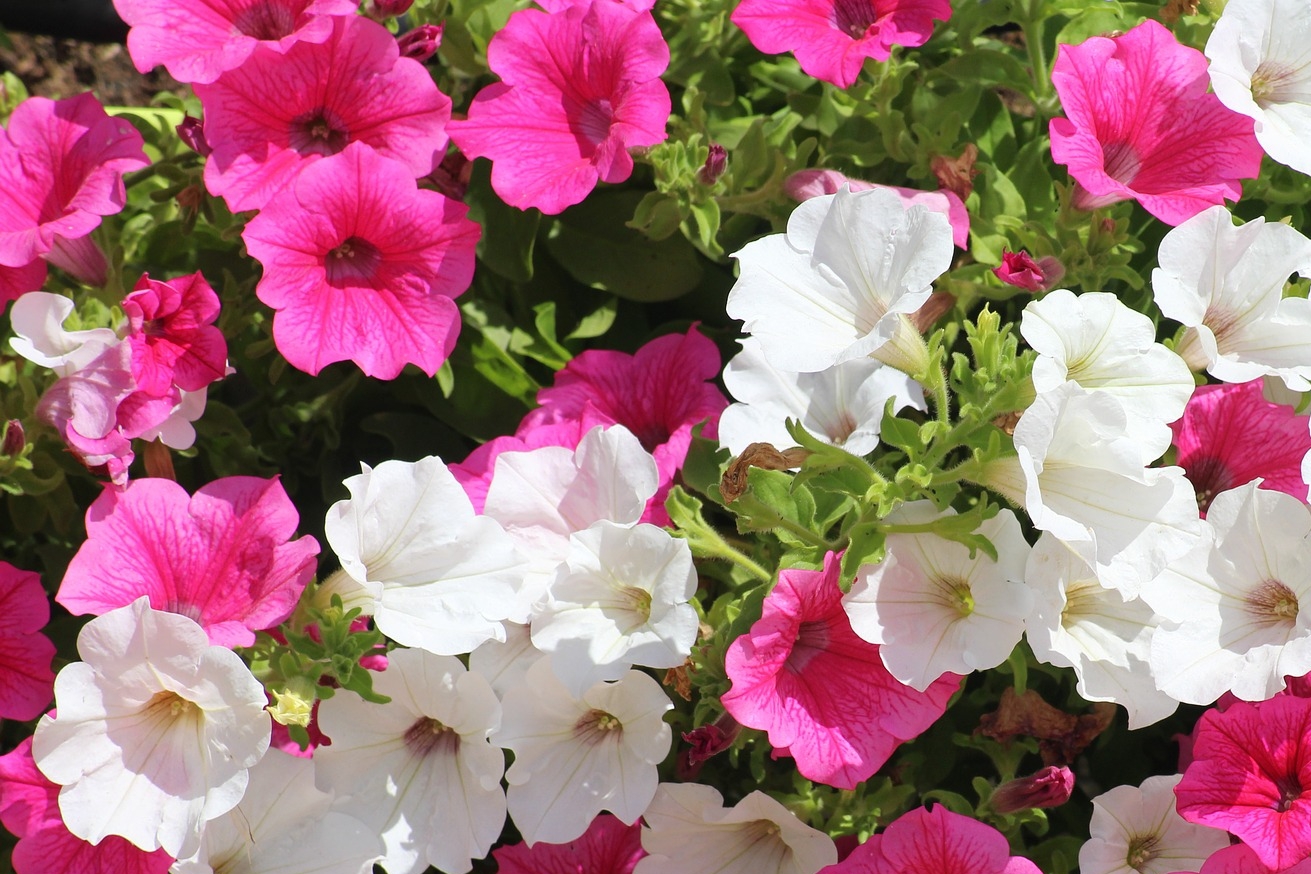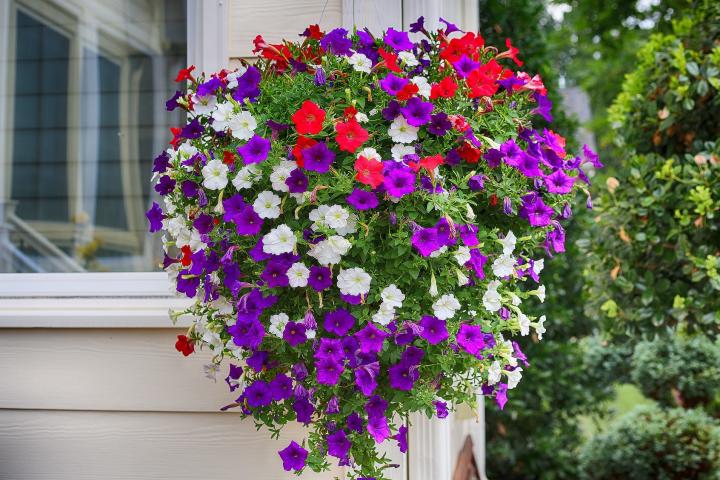
Photo Credit
Pilat66/Getty Images
Subhead
Planting, Growing, and Caring for Petunias
Read Next
Types
Multifloras
- ‘Carpet Series’ is very popular. They are compact, early blooming with 1½- to 2-inch blooms that come in a wide variety of colors, and are ideal for ground cover.
- ‘Primetime’ series stay compact and uniform, covered with 2¼-inch flowers.
- ‘Heavenly Lavender’ is an early, compact, double, deep lavender blue with 3-inch blooms on 12- to 14-inch plants.
Grandifloras
- ‘Sugar Daddy’ (Petunia Daddy Series), which sports purple flowers with dark veins.
- ‘Rose Star’ (Petunia Ultra Series), whose flowers look striped because of its rose-pink flowers with a white center.
Floribundas
- ‘Celebrity’ series petunias are compact and rain-tolerant. The flowers reach 2½ to 3 inches across.
- ‘Madness’ series petunias have big, 3-inch flowers in many veined and solid colors. They are compact and bloom until frost. They bounce back well after rain.
- ‘Double Madness’ petunias are compact and floriferous with big, 3-inch flowers all through the summer. Like their single counterparts, ‘Double Madness’ petunias bounce back within hours of a rainstorm.
Millifloras
- ‘Fantasy’ forms neat, compact mounds.
Trailing Petunias
- ‘Purple Wave’ was the first cultivar in the class of spreading petunias. It produces large blooms of deep rose-purple. It is tolerant of summer heat, drought, and rain damage. ‘Purple Wave’ remains under 4 inches tall.
- ‘Wave’ series petunias are available in a multitude of colors. Most are not quite as ground-hugging as the original. They are weather tolerant, disease resistant, and heavy-blooming.
Gardening Products
More Like This
I'm going to be re-planting the bed with new petunias, but wanted to check whether the dead-looking sticks (all that remains above ground from last summer), will come back to life and flower again this year... I know they are meant to be annuals so is this what they normally look like after their one season. Can I safely remove them and plant anew?
I am teaching high school botany and for a class project, we are using varying environments to grow petunias to see the effect. In order to preserve the experiment, I need a controlled environment. I have everything the same, UV light, temperature, etc, but I cannot find an exact measurement for water. All the sites say to touch the soil to see if its dry. I need something a little more exact to preserve our controlled environment. Do you have a suggested amount or frequency we can use?
one simple solution can be
1. weigh a few spoonfuls of the soil as it is, let it be w1
2. heat the soil, an oven can do the job, to lose the moisture.
3. weigh the soil again, let it be w2
difference in the two weights, w1-w2, will be the weight of water per w2 weight of soil,
it is difficult to lose all the water from the soil and some may still remain attached to the soil even after
lots of heating. But it is likely to be very little for most of the soils which are fit for cultivation and one can ignore that.
one can go for very refined measurements also,
with best regards
Rajesh
I live in Southern Australia in a temperate climate. I planted petunia seedlings in late summer (that's mid February here). Do you think they will keep flowering into mid fall (April) when I want a nice display?
I have just bought new pink petunia with white lines on it, after few blooms the color of flowers have changed to purple and white. My purple petunia do not touch pink ones.
I live in India, with max temp currently 27 C and min around 11 C
Fresh leaves of some of my potted petunias are turning out to be yellowish and the plant does not grow after that. Even the flowers in these yellowish parts are very small and look sickly. The plant just stays the same, no growth, nothing, after this yellowness happens.
The drainage is good, they get about 6-8 hours of sunlight, other nearby petunias, potted and cared for in the same way are doing well. Somebody has suggested putting some vinegar to make the soil acidic. Please help,
I have noticed this problem in the last few years only in Delhi, India. Now i see the same in other people's
petunias also.
thanks, will try
rajesh
Our petunia looks like it's wilting and it does look a bit fresher after it's watered, but doesn't improve much. I'm not sure what's going wrong.
- « Previous
- 1
- 2
- …
- 10
- Next »











Comments